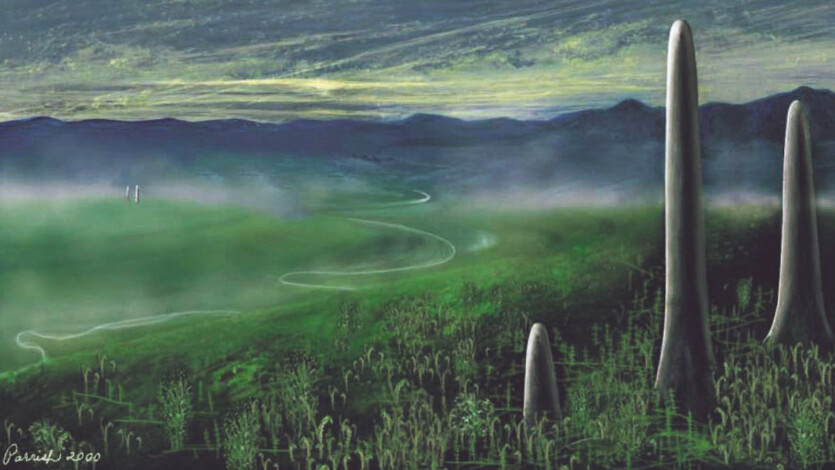
An international team of researchers claims that the first species of giant land organisms on Earth, called Prototaxites, may likely belong to the to a completely unknown branch of life.
These organisms, lived on our planet about 420-375 million years ago during the Devonian period. They looked like huge tree trunks without branches, reaching 8 meters in height and about a meter in width.
The first Prototaxites fossil was discovered in 1843. For a long time, scientists could not figure out whether these organisms were plants, fungi, or perhaps algae Chemical analysis of fossilsconducted in 2007 showed that these organisms were most likely ancient giant fungi.
However, a new article published on March 17 on the bioRxiv preprint server argues that Prototaxites probably did not belong to fungi, but rather were a completely separate, previously unknown species. The study has not yet been peer-reviewed.
All life forms that exist and have ever existed on Earth are traditionally classified into three classes — bacteria, archaea, and eukaryotes. The latter include all multicellular organisms within four kingdoms: fungi, animals, plants, and protozoa. Bacteria and archaea are exclusively single-celled organisms.
Preliminary chemical analyses of Prototaxites fossils have shown that they most likely fed on organisms that decompose, like the vast majority of modern fungi, instead of photosynthesizing, as plants do. The new study argues that Prototaxites may in fact have belonged to an entirely separate kingdom that cannot be classified as fungi, plants, animals, or protozoa.
The researchers studied the fossils of one of the Prototaxites species, called Prototaxites taiti, were found in the siliceous sedimentary deposits of the Rainey in Scotland. The fossils in these sediments are surprisingly well preserved early land plants and animals. This species was much smaller, reaching a height of no more than 10 centimeters. However, it still remains the largest Prototaxites specimen found in the region.
After studying the internal structure of the Prototaxites fossils, the researchers found that they had a tubular structure inside, similar to what you can see inside mushrooms But these tubes branched out and reconnected in a completely different way from modern mushrooms.
«We report that Prototaxites taiti was the largest organism in the Rainier ecosystem, and its anatomy was fundamentally different from all known living or extinct fungi Therefore, we conclude that Prototaxites was not a fungus, and instead propose to classify it as a completely extinct terrestrial family of organisms», — the authors of the study state.
Real mushrooms from that period have also been preserved in the siliceous sedimentary deposits of the Rainier. This allowed the researchers to compare them with Prototaxites. In addition, the scientists found that the chemical traces of Prototaxites are completely different from fungal fossils, indicating that they did not contain chitin, which is a key building block of fungal cell walls Instead, Prototaxites fossils probably contained chemicals similar to lignin found in wood and plant bark.
«We conclude that the morphology and molecular fingerprints of P. taiti are clearly different from those of fungi and other organisms that have been preserved with them in the siliceous sediments Rainey, and we propose to consider it a representative of a previously undescribed, completely extinct group of eukaryotes», — the researchers emphasize.
Professor at Stanford University Kevin Boyce, who led the study in 2007, said he agrees with the findings of the new research.
«Given the phylogenetic information available to us, there is no appropriate place for Prototaxites in the phylogeny of fungi So, it may be a fungus, but whether it is a fungus or something else entirely, it is a new example of a complex multicellular organism that is currently considered extinct and has no common multicellular ancestor with any species that exists today», — Kevin Boyce said.
The results of the study are published on the preprint server bioRxiv
Source: LiveScience

Spelling error report
The following text will be sent to our editors: